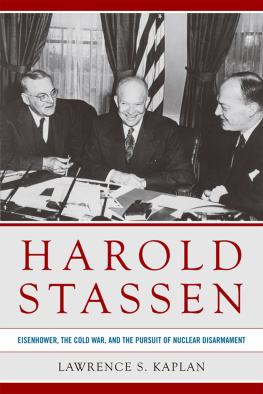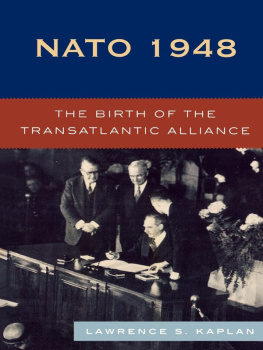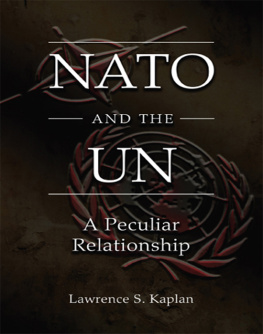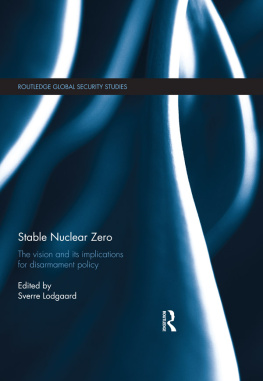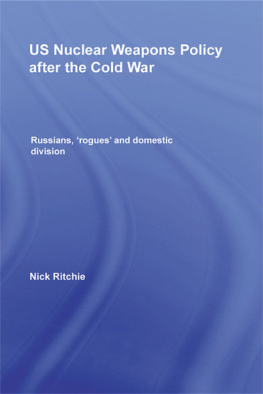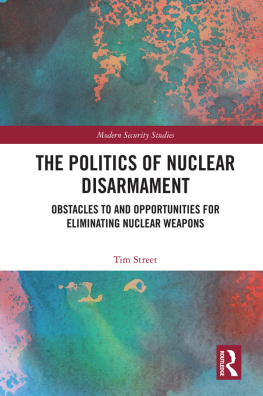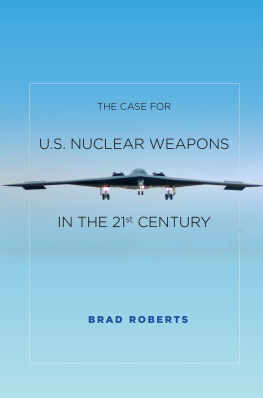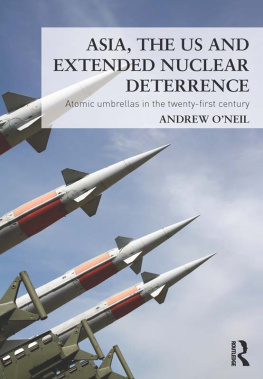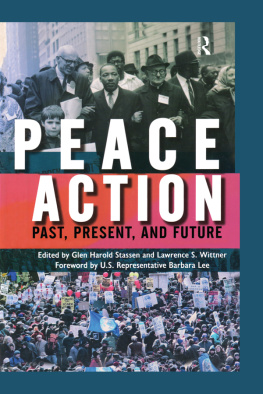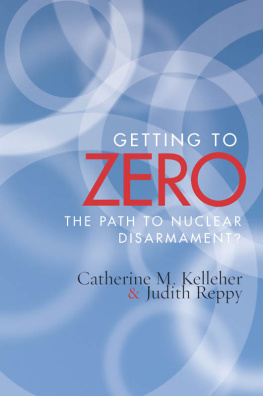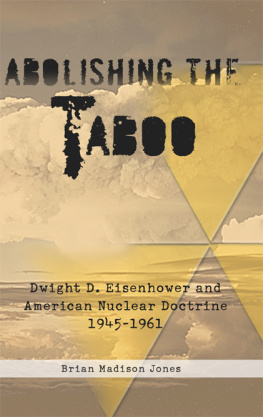
HAROLD STASSEN
HAROLD STASSEN
Eisenhower, the Cold War,
and the
Pursuit of Nuclear Disarmament
LAWRENCE S. KAPLAN

Due to variations in the technical specifications of different electronic reading devices, some elements of this ebook may not appear as they do in the print edition. Readers are encouraged to experiment with user settings for optimum results.
Copyright 2018 by The University Press of Kentucky
Scholarly publisher for the Commonwealth,
serving Bellarmine University, Berea College, Centre College of Kentucky, Eastern Kentucky University, The Filson Historical Society, Georgetown College, Kentucky Historical Society, Kentucky State University, Morehead State University, Murray State University, Northern Kentucky University, Transylvania University, University of Kentucky, University of Louisville, and Western Kentucky University.
All rights reserved.
Editorial and Sales Offices: The University Press of Kentucky
663 South Limestone Street, Lexington, Kentucky 40508-4008
www.kentuckypress.com
Library of Congress Cataloging-in-Publication Data
Names: Kaplan, Lawrence S., author.
Title: Harold Stassen : Eisenhower, the Cold War, and the pursuit of nuclear disarmament / Lawrence S. Kaplan.
Other titles: Harold Stassen, Eisenhower, the Cold War, and the pursuit of nuclear disarmament
Description: Lexington, Kentucky : The University Press of Kentucky, [2018] |Series: Studies in conflict, diplomacy, and peace | Includes bibliographical references and index.
Identifiers: LCCN 2017042890| ISBN 9780813174860 (hardcover : alk. paper) | ISBN 9780813174884 (pdf) | ISBN 9780813174891 (epub)
Subjects: LCSH: Stassen, Harold E. (Harold Edward), 1907-2001. | StatesmenUnited StatesBiography. | Nuclear disarmamentUnited StatesHistory. | Eisenhower, Dwight D. (Dwight David), 1890-1969. | Cold WarPolitical aspectsUnited StatesHistory20th century. | United StatesPolitics and government1945-1989. | United StatesForeign relations--1945-1989.
Classification: LCC E748.S784 K37 2018 | DDC 973.921092 [B] dc23
LC record available at https://lccn.loc.gov/2017042890
This book is printed on acid-free paper meeting the requirements of the American National Standard for Permanence in Paper for Printed Library Materials.

Manufactured in the United States of America.

| Member of the Association of
American University Presses |
To Phil Cantelon,
distinguished historian and loyal friend,
and to Steve Rearden,
who has read and improved
every NATO manuscript I have written.
Contents
Introduction
There are few figures in the American political firmament whose long career began so early and so auspiciously and then faded gradually but steadily into obscurity. Bursting into fame toward the end of the Great Depression, Harold Stassen, Minnesotas boy governorelected at age thirty-one in 1938 and reelected in 1940 and 1942excited a new generation of Republicans to support him enthusiastically for president. After failing to win the nomination in 1948, a goal he believed his early successes merited, he chased after the nomination over the next generation. It made him a figure of mockery as a perennial also-ran on the margins of the history of the twentieth century. He sought the nomination of the Republican Party for president of the United States twelve times between 1944 and 1992.
Arguably, his persistent quest for high office devolved from his early successes as district attorney of his native Dakota County in his twenties, his spectacular popularity as governor of Minnesota in his early thirties, and his prominence as a US delegate to the San Francisco Conference on the United Nations Charter in 1945. His sense of entitlement was enhanced by the reactions he aroused in young Republicans, who saw in him a liberal internationalist who would return the party to the White House. Stassen was keynote speaker at the 1940 Republican National Convention before he was old enough to be a presidential candidate. He redeemed a promise to his constituents in 1942 that he would leave the governors office the following year. He joined the US Navy in 1943, serving as a lieutenant commander in the Pacific on Admiral William H. (Bull) Halseys staff.
Small wonder, then, that he believed he would achieve the presidency after leaving the navy in 1945. Stassens path to distinction seemed destined from the time he graduated from the University of Minnesota Law School in 1929. As an undergraduate, he had been a masterful intercollegiate debater and captain of the universitys rifle team. It was a logical step from a law office in South St. Paul, Minnesota, in 1929 to election as district attorney of Dakota County in 1934 and 1936 and then to the governors office two years later.

Governor Harold E. Stassen, circa 1940. (Harris & Ewing, photographer; Library of Congress)
At the cusp of what was anticipated to be a brilliant career, his trajectory began to fall with missteps in a debate with Governor Thomas E. Dewey of New York in the Oregon presidential primary campaign in 1948 and spiraled downward from there. He did not win the nomination that year, despite impressive grassroots support from young Republicans in the face of opposition from party leaders. His 1948 campaign was the closest he would come to realizing his dream in politics. Thereafter, he campaigned for governor of Pennsylvania in 1958 and 1966 and mayor of Philadelphia in 1969, seeking to capitalize on his prestige as president of the University of Pennsylvania from 1948 to 1952. After moving back to Minnesota in 1982, he ran for a congressional seat in 1985, failing once again. In the midst of these activities he continued to seek the presidency without success. His was a tale of continual rejection, yet continual perseverance, in politics at every level.
The objective of this study is not to revise Stassens record as a politician. Rather, it is to look closely at his activities as an administrator and a diplomatist, to which he brought the same energy and talent that had been so conspicuous in his service as governor of Minnesota, as administrative aide to Halsey, as delegate at the San Francisco Conference on the United Nations Charter, and as a leading contributor to the framing of President Eisenhowers foreign policies.
Inevitably, he made enemies along the way. Notwithstanding serial failures in the political arena, his overweening self-confidence led to efforts to dominate whatever gathering he attended. He gladly entered combat with Secretary of State John Foster Dulles, even though Dulless experience and connections outmatched the younger mans resources. Stassens reputation, however, was distinguished enough to pose a threat to Dulless management of foreign affairs in the Eisenhower administration. His performance at the San Francisco Conference in 1945 in expressing and defending American objectives in the UN Charter won him sufficient recognition in North Atlantic Treaty Organization (NATO) circles to be cited as a potential secretary-general of that organization.
Next page
